This post may contain affiliate links. Please read our disclosure policy.
Ackee and Saltfish is Jamaica’s national dish and a breakfast recipe that never misses. With canned ackee and perfectly sautéed saltfish, this authentic Jamaican meal is easy to make no matter where you live.
Check out my list of Jamaican Breakfast Ideas for more traditional Jamaican recipes.
There’s a reason why ackee and saltfish is the national dish of Jamaica—it’s that good! The flaked saltfish, soft ackee, and sautéed veggies come together in the most flavourful way, and a quick parboil helps the ackee hold its shape just right. This was a staple in our home growing up, and it’s one of those dishes that works for breakfast, brunch, lunch, or dinner. Once you make it, you’ll see why it’s loved at any time of day.
What is ackee and saltfish?
Ackee and saltfish is Jamaica’s national dish, made with soft, buttery ackee and savoury, sautéed saltfish. Ackee is a fruit brought from West Africa, while saltfish was introduced during the colonial era as a preserved protein source. Over time, this combination became a staple across the island, especially for breakfast. Jamaicans continue to eat ackee and saltfish not just for its flavour, but because it represents history, culture, and resilience on a plate.
What’s in Ackee and Saltfish?
- Ackee: Be sure to drain and rinse the canned ackee before adding it to the other ingredients.
- Saltfish: You can use boned or boneless saltfish.
- Onion: The sharp flavour pairs so well with the peppers.
- Peppers: I used a blend of orange bell pepper, red bell pepper, and scotch bonnet pepper. The bell peppers add a nice crunch, color, and sweetness whereas the scotch bonnet brings the heat.
- Tomato: Slice them into thin wedges. They lighten up this savoury meal.
- Fresh Thyme: Use fresh sprigs for an aromatic quality.
- Black Pepper: Use more or less to taste.
- Vegetable Oil: Opt for this or another high-heat oil. I use vegetable oil because it has a neutral taste and doesn’t overpower the other flavours. Avocado or coconut oil would work well too.
How to Cook Ackee and Saltfish
If you’re wondering how to make ackee and saltfish, you’re in the right place. Here’s exactly how I prepare it step by step.
How to Desalt Saltfish
I start by rinsing the saltfish under cold water and cutting it into smaller pieces. Then, I boil it in a pot of water for about 10 to 15 minutes to help remove some of the salt. After draining and rinsing again in cold water, I taste a small piece to check the saltiness. If it still tastes too salty, I repeat the process. Once it’s just right, I flake it into bite-sized pieces and set it aside.
Prep the Ackee
To prepare the ackee, I drain the liquid from the can using a strainer, then give it a quick rinse with cool water and drain it again. Sometimes, I’ll bring a pot of water to a boil and let the ackee sit in it for about 3 minutes—this optional step helps it hold its shape better during cooking.
Sauté the Vegetables and Aromatics
In a large skillet, I heat up some oil over medium-high heat. Then I add sliced onions, bell peppers, tomatoes, thyme, and a whole scotch bonnet pepper. I sauté everything for about 5 minutes until the vegetables are tender and aromatic.
Combine the Saltfish and Ackee
Next, I add the flaked saltfish and cook it for about 2 minutes so the flavours can come together. Then I gently fold in the ackee. Since ackee is delicate, I stir just enough to heat everything through without breaking it apart. A little black pepper at the end finishes it off, and that’s how I make saltfish and ackee.
Recipe Tips
- Desalt the fish properly. Taste a piece after boiling to make sure it’s not too salty. If needed, boil again to reach the right balance.
- Use canned ackee for convenience. Fresh ackee isn’t available outside of Jamaica, but canned ackee works well and still gives you an authentic flavour.
- Optional parboil helps ackee hold its shape. Letting it sit briefly in hot water before cooking can prevent it from becoming too soft or mushy.
- Don’t overmix once you add the ackee. Gently folding it in preserves its texture and keeps the dish looking and tasting great.
- Control the spice level with the scotch bonnet. Leave it whole for a milder heat, or remove it altogether if you prefer no spice.
- Add black pepper to taste. The saltfish is already salty, so no extra salt is needed—just a bit of pepper to round out the flavour.
What to Serve with Ackee and Saltfish
- Fried Dumpling: Crispy on the outside and soft inside, fried dumplings are perfect for soaking up all the savoury flavour.
- Festival: Slightly sweet and fluffy, festival adds a nice contrast to the saltfish and is a popular pairing for good reason.
- Breadfruit: Roasted or fried breadfruit is hearty and filling, making it an excellent base for this dish.
- White Rice: Simple and classic, rice helps balance the saltiness of the dish and makes it even more satisfying.
- Ground Provision: Boiled yam, green banana, and dasheen are traditional sides that add substance and texture to your plate.
- Plantains: Fried ripe plantains bring a touch of sweetness that complements the saltfish and ackee beautifully.
- Avocado: Sliced avocado adds creaminess and a mild, buttery flavour that works well alongside the bold seasonings.
Storage
Store leftover ackee and saltfish in an airtight container in the fridge and consume within 3 days. I don’t recommend freezing ackee and saltfish, since it can change the texture.
Reheat leftovers in a skillet over medium heat. Remember to stir it sparingly to avoid overmixing.
Frequently Asked Questions
Ackee has a light, nutty flavor and a creamy texture that easily absorbs the seasonings it’s cooked with. Though it looks like scrambled eggs, it’s more savoury than sweet and doesn’t taste anything like them.
Yes, you can use fresh cod if you’re watching your salt intake or don’t have access to salted cod. Just keep in mind that the flavour will be milder, so you may need to adjust the seasoning.
Ackee is very soft and can break easily if over-stirred. Try folding it in gently at the end of cooking and avoid stirring too much once it’s in the pan.
Soaking overnight is one method, but boiling is quicker and works just as well. Taste after boiling to check the salt level, and repeat if needed.
Eating unripe ackee can be dangerous, as it contains a poison called hypoglycin that causes vomiting and can be fatal. However, it is completely safe to eat once ripened and properly prepared for cooking.
More Jamaican Recipes
- Brown Stew Fish
- Jamaican Oxtail Recipe
- Jamaican Red Peas Soup
- Jamaican Chicken Soup
- Jerk Chicken Sandwich
- How to Soak Fruit for Christmas Cake
- Easy Jamaican Pigeon “Gungo” Peas and Rice
- Jamaican Pickled Vegetables (Escovitch Sauce)
- Jamaican Curry Shrimp (Seafood)
- Jamaican Rasta Pasta
- Quick & Easy Jamaican Jerk Chicken
If you try this Ackee and Saltfish recipe, we’d greatly appreciate if you leave us a star ★ rating, as well as some feedback in the comment section below if you found this blog post helpful and tasty!
Also, please use the hashtag #theseasonedskillet on social media for a chance to be featured, and don’t forget to keep up with TSS on Facebook, Twitter, Instagram, TikTok and Pinterest!
Lastly, sign up to our Friday weekly newsletter for the latest TSS updates, blog posts and recipes straight to your inbox.
Oh, and share, share, share with your family and friends!
Ackee and Saltfish
Equipment
- 1 Large Skillet
- 1 Fine Strainer
- 1 Wooden Spoon
Ingredients
- 1 440ml Can Ackee, drained
- 1 lb Salted Cod Fish, saltfish
- 1/2 med Onion, julienned
- 1/4 Orange Bell Pepper, julienned
- 1/4 Red Bell Pepper, julienned
- 1 sm Tomato, sliced into thin wedges
- 3 sprigs Fresh Thyme
- 1 Scotch Bonnet Pepper
- 1/4 tsp Black Pepper, more or less to taste
- 2 tbsp Vegetable Oil
Instructions
Desalt Fish (Additional Methods Listed Above)
- Fill a medium sized pot with water and bring to a boil. Rinse fish, cut into smaller pieces, and boil for about 10 to 15 mins. Drain then rinse in cold water. Taste a piece of the fish to gauge the saltiness. If it's to your liking, pick it apart into smaller bite-sized pieces and set aside. If it's too salty, repeat the process.
Prep Ackee
- Remove ackee from can and drain off liquid using a strainer. Then, rinse with cool water, drain again then set aside. Optional, bring to a boil a pot of water. Add ackee, let sit for about 3 minutes or until ackee starts to float, then drain and set aside.
Ackee and Saltfish
- Heat oil in a large skillet over medium high heat. Add the onion, bell peppers, tomatoes, thyme, scotch bonnet pepper and saute until tender crisp and aromatic, about 5 minutes.
- Add the saltfish and continue to saute for about 2 minutes. Then, gently fold in ackee, being careful not to overmix as this will make the ackee break apart and become mushy. Cook until the ackee and saltfish are fully heated through. Season with black pepper to taste, and serve hot.

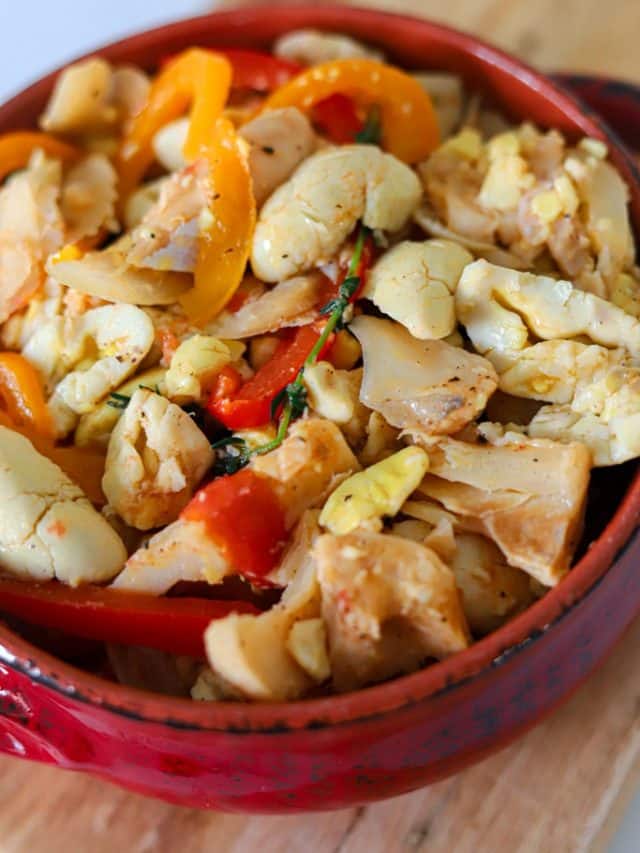

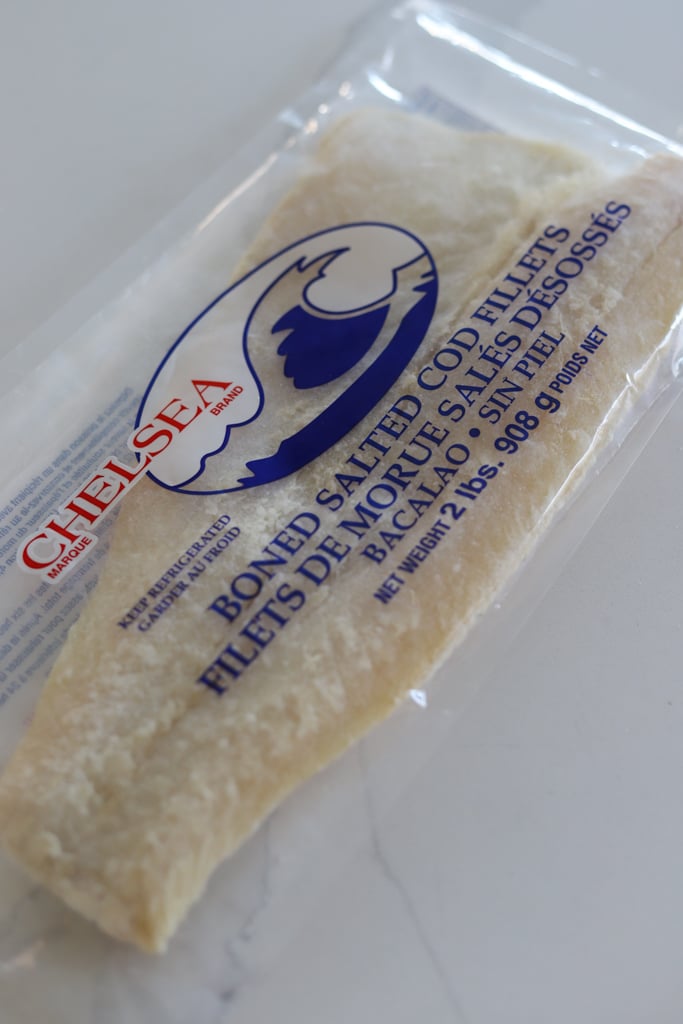


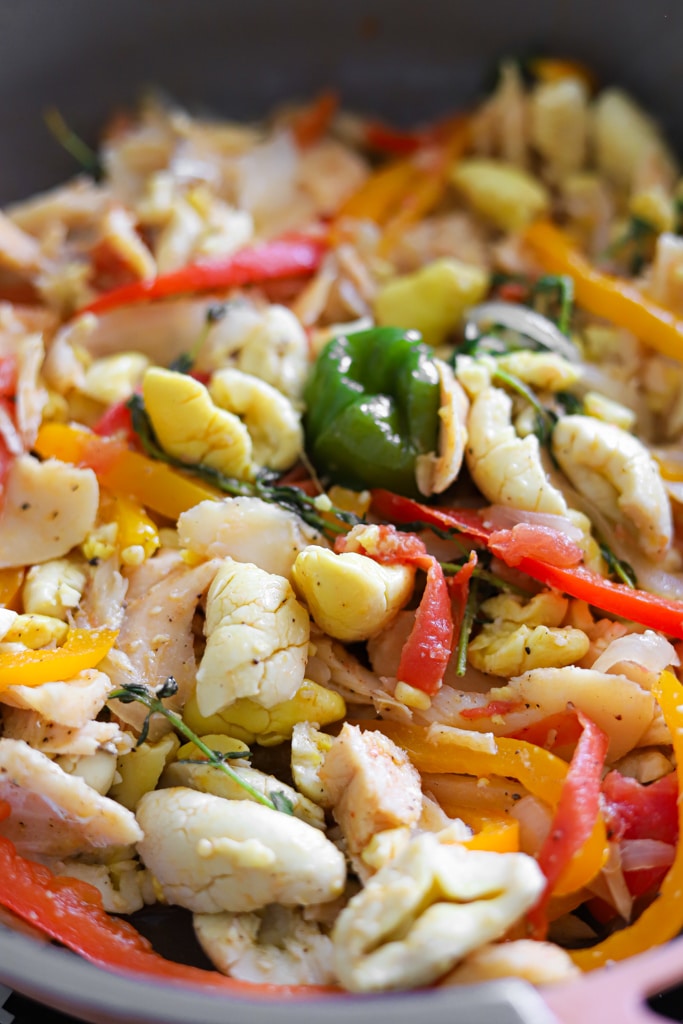

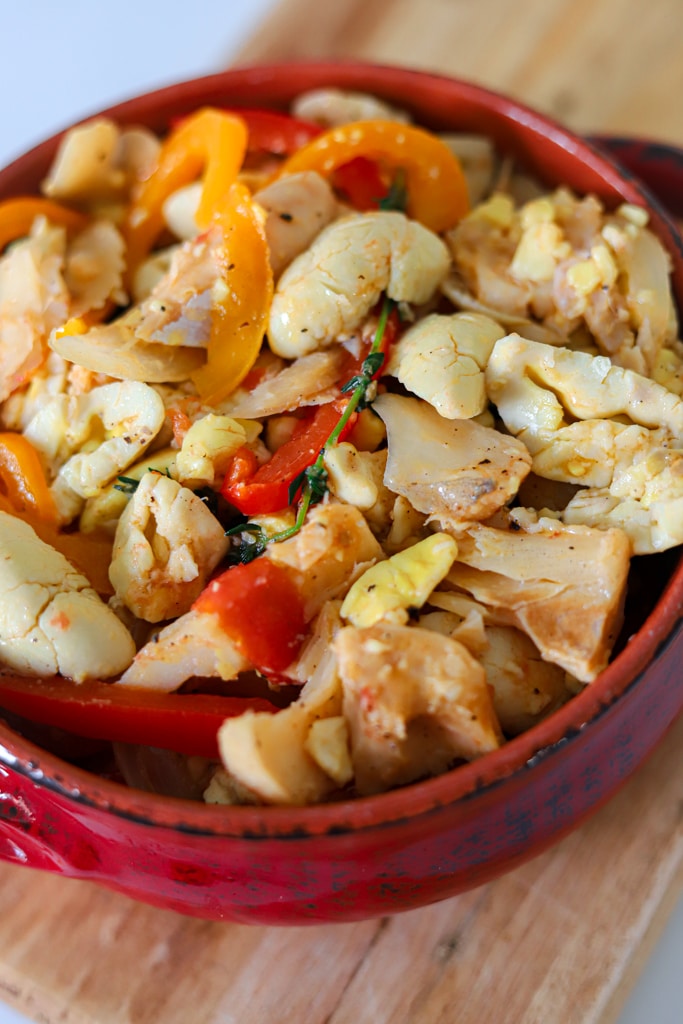
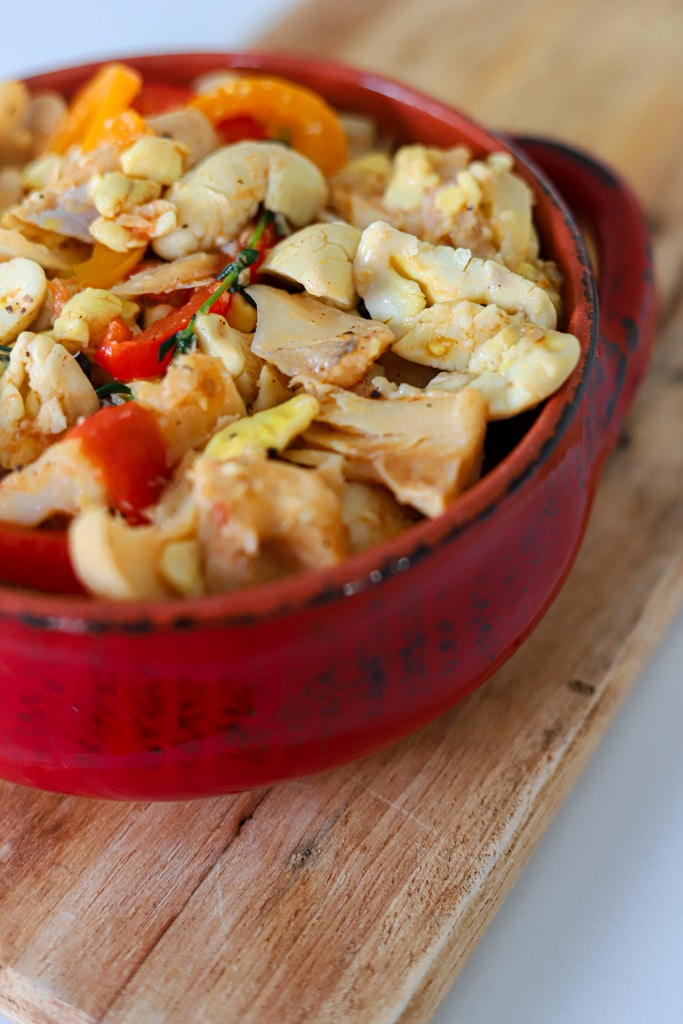


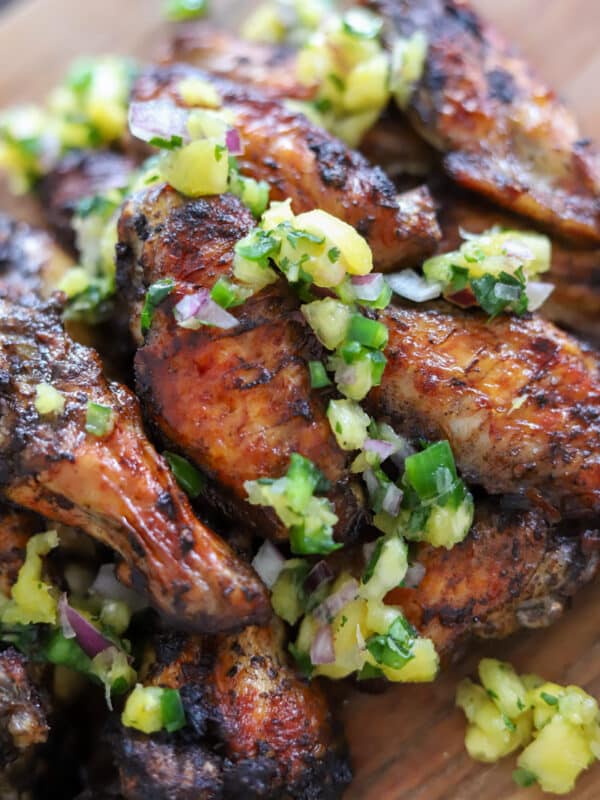
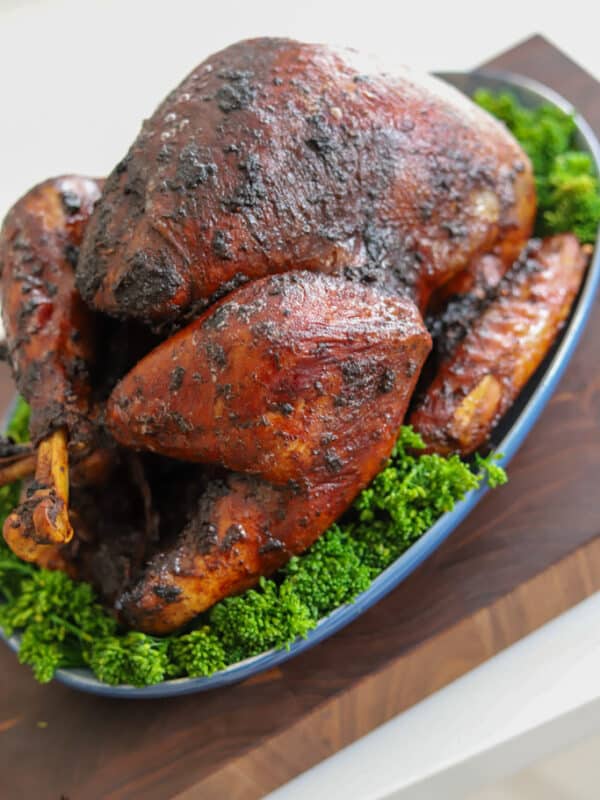
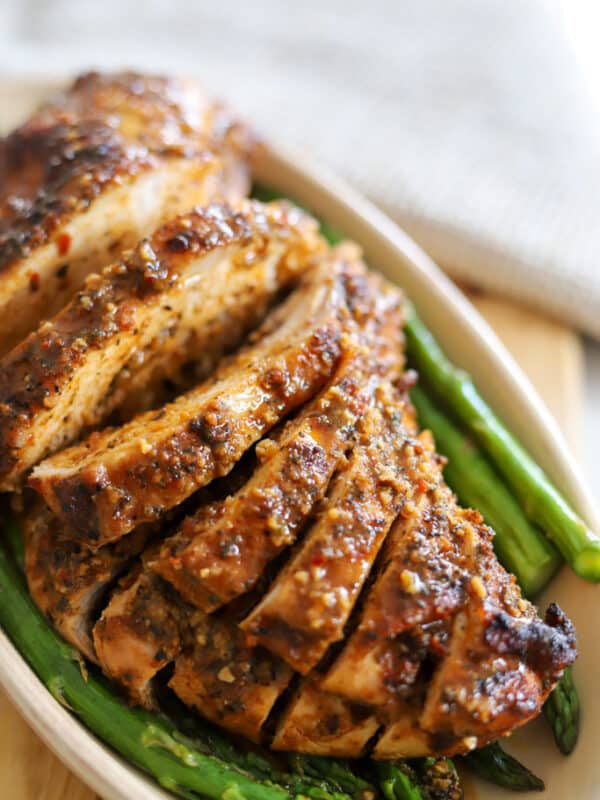
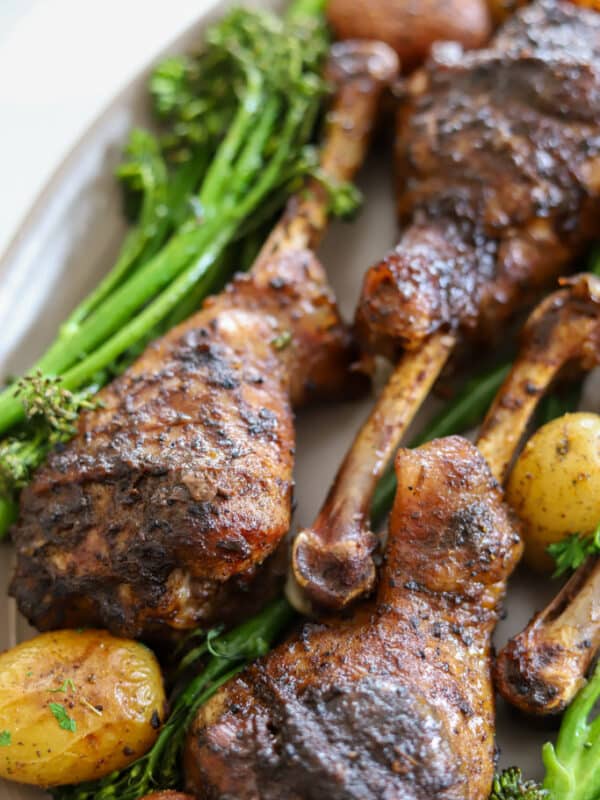








As a Rasta, and before I became a vegan Rasta, ackee and saltfish was my go-to meal. I love your version as it reminds me of my bredren and sistren who I used to enjoy this meal with.
Love to hear it Marta! So glad it brought you back to good times with your brothers and sisters! Yes!! Love it!
I’m thrilled to finally learn how to properly prepare this dish. Your instructions were clear and the results were spectacular! My taste buds thank you.
I have not had ackee and saltfish in forever and I’ve never tried making it myself at home, but your instructions made the process so simple! This is loaded with so much flavor and absolutely delicious!
Thank you for the step by step instructions and helpful pictures! This was my first go at ackee and saltfish and it came out wonderfully!